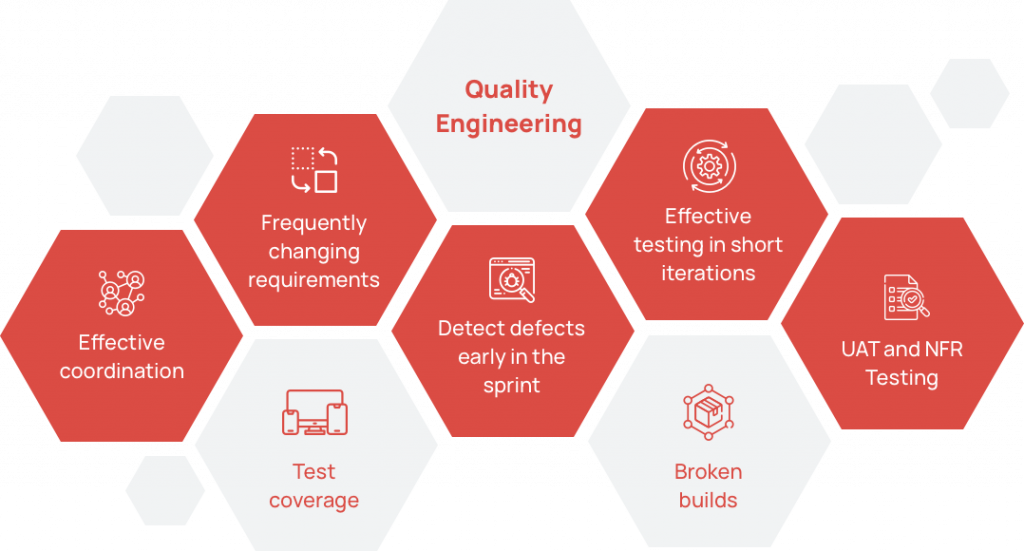Quality Engineering is the new term of reference for Testing. Product testing services are essential in
making sure that a product is of high quality and functions according to customer needs and
expectations. Testing also helps to ensure that Product is usable, reliable and suitable to the need of
business. There are some key benefits of the Product Testing (as called out by Jerry Thomas of
Decision Analyst)
- Ensures products work as promised
- Ensures customers can use products as designed
- Highlights competitive strengths and weaknesses
- Helps improve product performance
- Improves customer satisfaction
- Helps predict customer acceptance of the product
- Provides data for use in creating future products
With such a pivotal importance of testing in the success of a Product, traditionally there has not
been serious focus by product engineering teams on testing. Developers used to perform testing.
Later QA resources started becoming part of the agile process and have been testing the product
features, backlog items whenever they were made available to them by the development team.
Although testing focus was enhanced there was no proper strategy, planning and right mindset put
in testing to get best product out. Following are some of the challenges faced in the traditional
testing while being deployed in Agile projects:

Figure 1.0 Testing Challenges faced in Agile based Projects
Over last few years, testing is now being looked at as Engineering function and hence has the
attributes such as vision, planning, strategy, collaboration, innovation, automation and most
important is the outcome focus. This has helped Product teams/ QA leads and QA members to take a
completely different approach towards testing.
There is philosophy which we use at Digialpha for Agile based projects: – We call it as EFOA
framework at Digialpha.
E- Test Early: Unit and Component testing
F- Test Faster: Use reusable test cases, risk based testing, A/B testing
O- Test Often: Exploratory Testing, Manual Regression etc.
A – Automated service testing, scripless automation
The Approach based on the above Framework we take:
-
Shift Left Approach: Focus on avoiding defects rather than finding and fixing them later.
This involves close coordination between the testers and developers and joint effort to
ensure quality - Agile Testing Pyramid: Quality is the responsibility of the entire team with focus on
writing robust code and reducing the reliance on UI testing by giving prominence to Unit
testing and code quality - Test Channels: Different testing channels like Unit, Functional, Automation, NFR and
UAT with different levels of involvement from various stakeholders and preplanned
outcomes - Specialized Roles: Introduction of specialized roles like Test Mentor in the team to aid
test effectiveness and strengthen the notion of quality - Automation: Higher importance on automating test cases to maximize coverage and
reduce time spent in manually running test cases for regression testing - DevOps: Work closely with DevOps team and process to automate build and
deployment, and automate regression to deliver working software at regular intervals
The benefits we have seen across the projects for few of the parameters are:
| Parameter | Improved Value | % Improvement |
|---|---|---|
| Unit Test Case Coverage | 97% | 15% |
| Unit Test Success Density Test success density = (Unit tests – (Unit test errors + Unit test failures)) / Unit tests * 100 |
25% over the previous outcome |
|
| Functional Test Case Coverage (The number of functions executed by a test suite is divided by the total number of functions in the software under testing to calculate this metric.) |
90% | 20% |
| Defect Density | 0.001 | 35% |
It is important to adopt Agile testing focussed approach as called out in this blog and it is a change
management process which helps us to drive this change across the teams and in the QA team
behaviour. Eventually it beneficial driving cost reduction, better product quality and achieving
customer delight.
